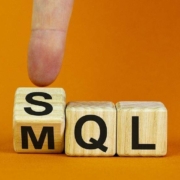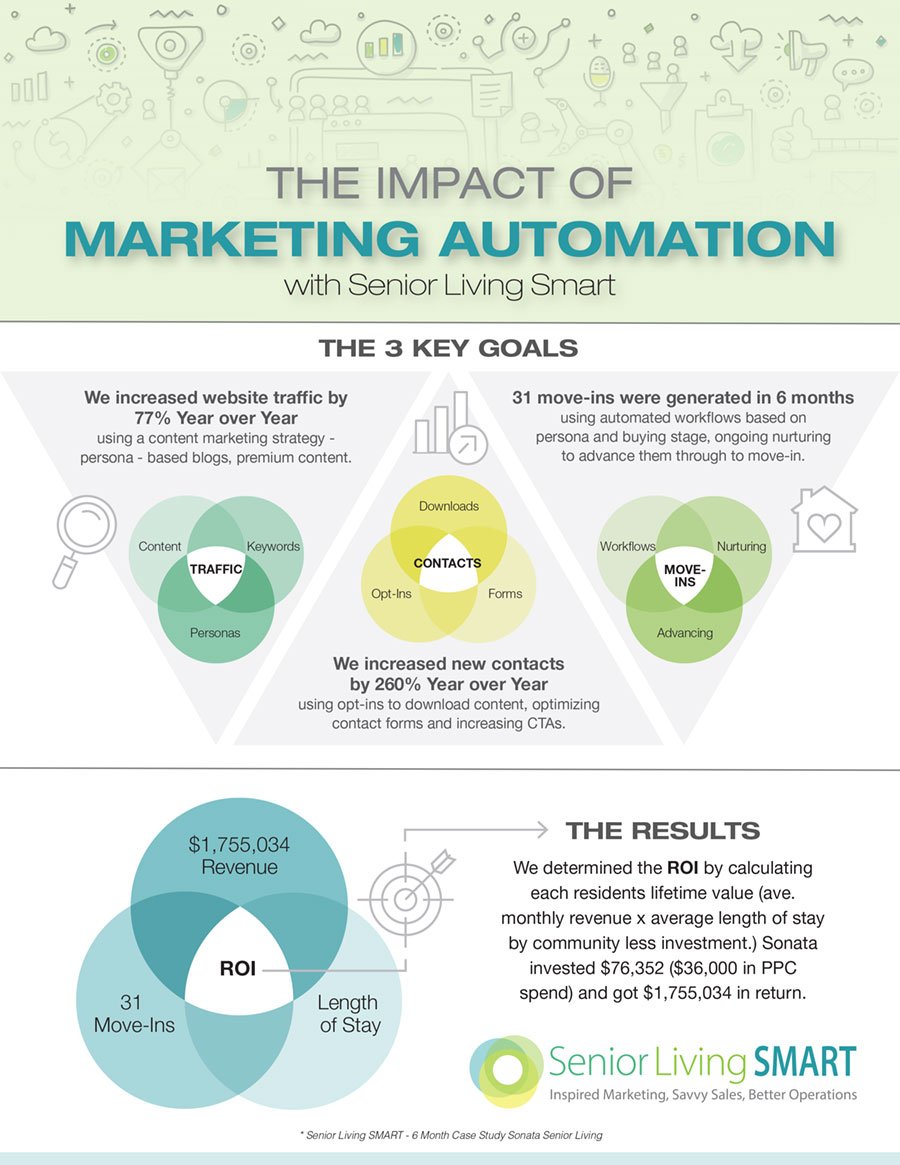Senior Living Leads: Why You Should Think Beyond 60 Days
Our industry has gotten into a bad habit. Too many marketers and sales folks neglect senior living leads that haven’t signaled a need to move within 30 to 60 days. In addition, many communities purchase marketing software like HubSpot thinking they’ll suddenly have an influx of sales-qualified leads (SQLs) for sales reps to work their magic on.
What most of these sales reps and marketing folks don’t seem to understand is that the majority of senior living leads come in as marketing-qualified leads (MQLs), not sales qualified.
Ignoring MQLs isn’t the answer. Learning how to nurture MQLs to sales-qualified status is. Follow the best practices below for doing exactly that.
Create different paths for different buyers.
We’re famous for saying that not all senior living leads are created equal. Now, let’s take it a step further: Not all MQLs are created equal, either.
Some MQLs will be older adults looking for a place to move in 6 to 12 months. Others will be adult children looking on behalf of their parents. The older adults might be married, divorced, or widowed. Some might be in excellent shape and others might have health challenges. In the older children camp, some might be searching for a loved one who’s resisting the move. Others might be dealing with complex family dynamics (sibling against sibling).
- Your Task: Create plenty of marketing paths on your website to satisfy many different types of MQLs. For example, the content an adult child needs will be different from the needs of an older adult who’s buying for herself. The first step in this process involves doing buyer persona work.
Create compelling lead nurturing campaigns.
The keyword is “compelling.” The biggest mistake communities make is treating lead nurturing like a box they need to check off, meaning not much thought is given to the emails in each campaign.
Content matters. Don’t send emails simply for the sake of sending them out. Think about what the campaign is trying to accomplish. Are you trying to get someone to download another piece of content? To view a video? To schedule a tour? While it’s easy to think “Yes! I want everyone to schedule a tour,” keep in mind that not all MQLs are ready for tours just yet. Nurture, don’t rush.
- Your Task: Write compelling copy in your emails. If you can’t do it, hire a professional copywriter to write engaging copy for you. (Or work with an agency like ours that has a stable of talented writers.)
Monitor your lead nurturing campaigns.
The next big mistake that communities make with their lead nurturing is setting up and forgetting about it. Marketing automation is the culprit here. Don’t get us wrong: Automation is great! It was designed to eliminate manual, rote processes, after all. But setting up something to automatically go out and never following up to see if what you’re sending out is actually working isn’t a smart strategy.
- Your Task: Look at overall conversions for each campaign. Is the lead nurturing campaign accomplishing what you set it up to do? If the goal of the campaign was to get someone to download the next piece of content that makes sense for them in their journey, how many folks in the campaign did exactly that? A dismal 1%? Or an impressive 20%?
For the campaigns that aren’t delivering impressive conversions, take a deeper dive.
- Look at the analytics for each individual email. Look at open rates. Yes, open rates can be misleading/deceiving, but you need to start somewhere. Study the subject lines in the winning emails from your successful lead nurturing campaign. Can you draw any conclusions on why they’re so effective? (Such as length or use of personalization.) Tweak the subject lines in the emails that aren’t enjoying high open rates and see if things improve.
- Look at the content in the emails that have high open rates, but low conversions. Try changing one thing—perhaps the call to action or the length of the email—to see if it improves conversions.
While analytics are based in real numbers, how you respond to the analytics and what you decide to fix/change to get more senior living leads will be less scientific.
The numbers might be telling you that email #1 has a 42% open rate but 1% conversions on the offer. You know something isn’t working. But now you have to experiment to see if you can figure out why it isn’t converting—and if you can come up with a solution. This part is more art than science. Once you make your adjustment, you’ll then return to the analytics in a few weeks or months to see if your adjustment changed things for the better.
Track what successfully moves an MQL to an SQL to an actual customer.
As you nurture more MQLs to SQLs, and convert SQLs to residents, pay attention to where the lead conversions happened. Is there a certain piece of content that’s doing the trick? You might want to spend more time promoting that content (and not just on your site, but through other means, like paid search). Is there a specific call-to-action that gets people to schedule a tour? Use that CTA in other emails and on your site.
- Your Task: Do more of what gets you the results you crave and less of what doesn’t.







